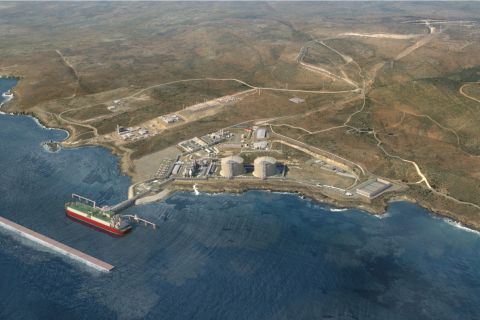Presented by:

Editor's note: This article appears in the special OTC edition of the E&P newsletter. Subscribe here.
Workboat and offshore environments often involve lifting, moving or operating heavy equipment, especially within tight space constraints. Due to harsh conditions, machinery needs to be reliable across thousands of hours of operation with minimal downtime for maintenance and repair.
A new generation of compact, hydraulic radial piston direct drive motors delivers the performance required for a wide range of maritime applications, including winch drives, cranes, jackup systems, subsea trenchers, top drives and rotating tables on drilling operations. These low-speed/high-torque hydraulic motors produce extremely high amounts of torque from a relatively compact package, making them well-suited to handle the kinds of loads these applications encounter. Combined with housings engineered to withstand the effects of a marine environment, hydraulic direct drive systems deliver multiple performance advantages.
Direct power and efficiency
Hydraulic direct drive motors mount directly to the driven shaft of a machine, providing up to 98% efficiency in their operation. Many marine applications are often powered by variable frequency electric drives coupled to gearboxes; the hydraulic direct drive eliminates the need for gearboxes and coupling equipment.
In addition, hydraulics are natural shock absorbers, so the impact on mechanical components (e.g., gearboxes) is mitigated or in some cases completely eliminated, leading to fewer failure points as well as reduced maintenance and downtime.
Compact and energy-efficient
Due to the compact design of the latest generation of hydraulic direct drives, they offer exceptional torque-to-weight ratio, providing higher levels of lifting and moving power for the drive’s size (e.g., with power capacities ranging from 113 kW up to 3.3 MW). This power density helps reduce the space needed on a crowded workboat or offshore platform deck, and it also helps reduce the machine’s overall weight and power consumption. They can operate in all four quadrants—forward and reverse in both the driving and braking modes—to provide greater flexibility when designing machines.
Torque control
Maritime applications such as capstan and winch drives must move punishing loads through hundreds of meters of ocean current. Hydraulic direct drives offer high starting torque at zero speed and throughout the speed range to meet the demands of these systems. They can both supply and maintain high starting torque, which is available directly from zero degrees of rotation.
This makes it possible to supply operators with exactly the torque they need, even down to zero rotation speed, which electromechanical systems have difficulty supplying. This can be exceptionally valuable in applications such as winch control when lifting heavy equipment from the ocean floor. The operator may need very fine control paying out the hook on the winch or crane at a fast rate of speed on the way down, but once the load is ready to be raised, the operator may need a lot of torque at very low speeds to lift the load.
In addition, hydraulic direct drives have a low moment of inertia that allows quick reaction to shock loads and spikes, limiting torque and protecting the equipment if it jams or strikes something unexpectedly, such as when subsea trenchers hit rock or submerged metal.
Tough marine environments
Suppliers of hydraulic direct drive systems, such as Bosch Rexroth, have developed models with special features designed to harden them against salt spray, seawater and high levels of vibration often encountered in maritime applications. These include special epoxy coatings to prevent corrosion as well as tightly enclosed housings and specially designed sealing kits and sealing arrangements where the motor joins the driven shaft to prevent corrosion or leakage. These motors are also rated to use biodegradable hydraulic fluid so they can be safely used in water without risking environmental contamination.
By combining excellent power density, high torque-to-weight ratios and compact design with housings engineered to resist extreme weather and corrosion conditions, today’s hydraulic direct drive systems provide a valuable and proven technology to drive many demanding maritime applications.
Recommended Reading
WTI Delivered to East Houston Hits Highest Premium in Nearly Three Years
2024-05-01 - Oil takeaway capacity from the Permian Basin will tighten next month due to scheduled pipeline maintenance.
CPS Closes $785MM Deal for Talen Energy’s Texas NatGas Plants
2024-05-01 - CPS Energy has acquired all assets associated with the 897-MW Barney Davis and 635-MW Nueces Bay natural gas plants in Corpus Christi, Texas, and the 178-MW natural gas plant in Laredo, Texas.
Wirth: Chevron Won’t Put ‘New Capital into Venezuela’
2024-05-01 - California-based Chevron Corp. doesn’t plan on allocating more capex into its operations in Venezuela even though it still has U.S. approval to operate there, despite Washington sanctions.
Repsol Plans to Double Oil Production in Venezuela
2024-05-01 - Spain’s Repsol plans to double its oil production in Venezuela and continue with its diluent swap agreements with the OPEC country as approved by the U.S. government.
Permian Gas Finds Another Way to Asia
2024-04-30 - A crop of Mexican LNG facilities in development will connect U.S. producers to high-demand markets while avoiding the Panama Canal.




